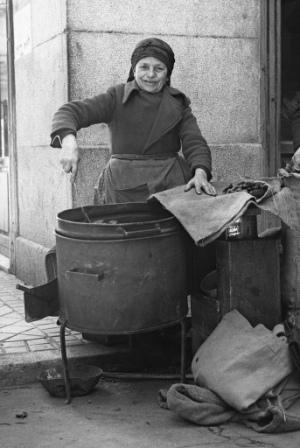The magosto or Chestnut Festival is a traditional festival in parts of Spain, Galicia, Asturias, Catalonia, etc.. It is also a very popular celebration in Portugal, where it is called Magusto. It has also spread internationally and chestnut festival.
Common elements are holding this event in November and have as main elements chestnut and fire.
From the Palaeolithic man fed on chestnuts and acorns. With the expansion of chestnut trees cultivation by the Romans, the fruit became the staple food of the population, such as fresh fruit, dried or ground into flour. In the sixteenth century the arrival of corn and potatoes were American chestnuts that lost its prominence in the peasant diet.
Traditionally this feast was celebrated during the collection of this fruit and also served as thanks to the gods for the harvest received.
In the days between November 1 (All Saints Day) and November 11 (Saint Martin), is usually held this party where there are plenty of fire-roasted chestnuts, new wine and sausages.
The party is to make a fire and, once there coals placed on them a metal cylinder with holes in its base (called drum). BOUT this container, or other like that, extend the chestnuts which have been previously made a cut on one end so that they do not jump or explode. Once peeled roasted and eaten.
Smudging is common face with the remains of the fire, jump over the fires and to bring luck and make Diferences traditional games, storytelling and singing folk songs.
 |
| Woman roasting chestnuts, known as Castañera. |
No hay comentarios:
Publicar un comentario